Onions are almost always on every gardener’s bucket list.
Onions are an extremely versatile vegetable in the kitchen that store well over winter, plus they have fantastic cold climate tolerance! It’s a no brainer that it’s one of the most popular vegetables that gardeners want to grow!
It is also well known that onions cause many gardeners serious trouble! Many experienced gardeners have sworn off growing them forever!
This subarctic focused growing guide will help guide you through the tricks, trials and tribulations of getting onions to maturity at subarctic latitudes!
First Things First, Long Day Varieties Only!
One of the most basic mistakes that new onion growers make is not realizing there are specific onion varieties for northern and southern latitudes!
Onions feature what is called photoperiodism, or sensitivity to the amount of light and dark that they “prefer” to receive every day. In general, different varieties of onions exhibit different tolerance towards more or less sunlight during the growing season. These tolerances are generally broken up into the following categories:
- Short day varieties
- Long day varieties
- Intermediate day varieties
You simply can’t just plant any onion seed and expect it to grow under the midnight sun!
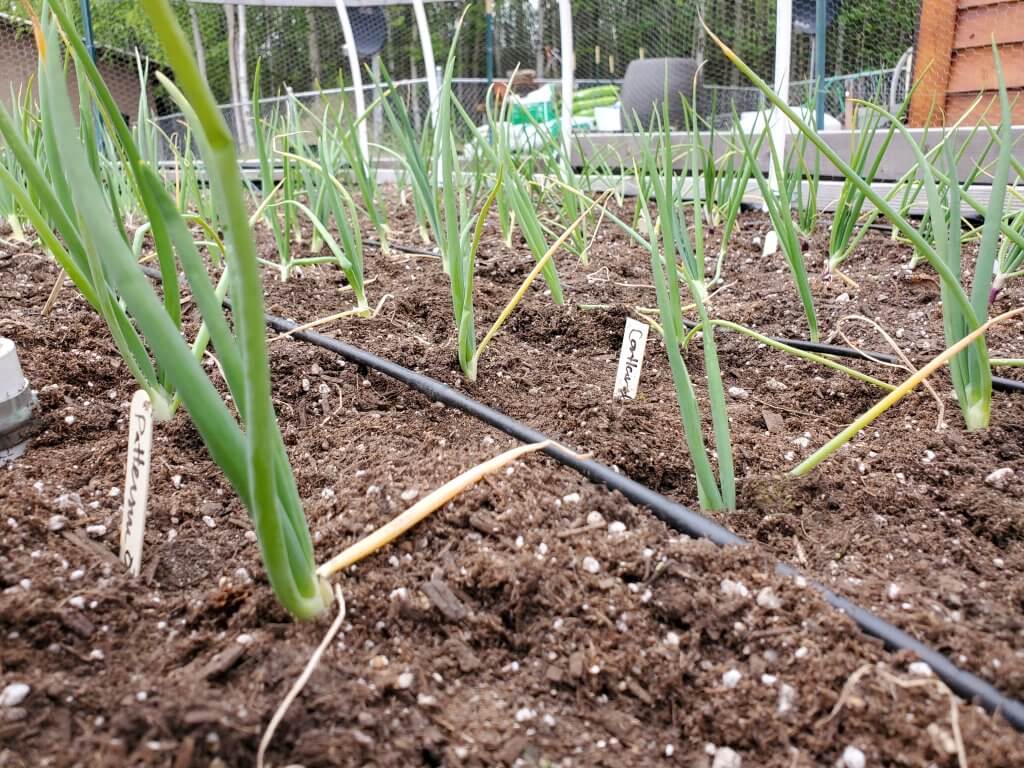
As you might imagine, with 24 hours of sunlight over the summer at subarctic latitudes, northern onion growers decidedly need long day varieties. If you plant a short or intermediate day variety, things will work out poorly for you.
Fortunately, you can purchase seeds or onion sets (more on that later!) of the popular red, white and yellow onions that meet the long day requirement. This is also true for short day varieties, which would be used at more southern latitudes. (Think Texas, not Chile.)
If you encounter an onion seed packet or seed seller that does not clearly identify this characteristic, you really need to do a bit more research to figure out what type they are!
Also, extreme northern gardeners want onions that will finish within 100-120 days. While onions are cold tolerant, our growing season ends abruptly and there is little flexibility once the season is over.
Mind The Age Of Your Seeds
Onion seeds are one of those seeds that really don’t last all that long. Even when properly cared for, the age of your seed stash matters!
Most sources out there recommend replacing pretty much all onion seeds every single year. There is some wisdom to this.
We think that can seem a bit wasteful. So we’ve studied onion seed viability in some depth ourselves.
You can try to “eek” a second, and sometimes even a third, year from your onion seeds. Remember, seed viability doesn’t just “end” – you’ll simply see lesser and lesser numbers of seeds reliably germinate.
If you want to extend your seeds, you’ll want to overplant. For year two, we generally recommend at least double what you actually need. For year three, we’d recommend triple or even quadruple. From here, you can select the best genetics to move forward with.
We have seen that after year three, seed viability can get really poor. You can still get 4+ year old onion seed to germinate, but this is really the time we’d recommend replacing your seeds.
Get Those Onions Started Early!
If you’re growing onions from seed, it’s important to understand that onions take a long time to grow. From initial seeding to harvest can take upwards of six months.
With relatively short summers in the far north, we use our indoor garden to get that six month growing season. Thus, onions are practically the very first thing we seed in our indoor garden.
We sow our onions twelve weeks before last frost. Three months!
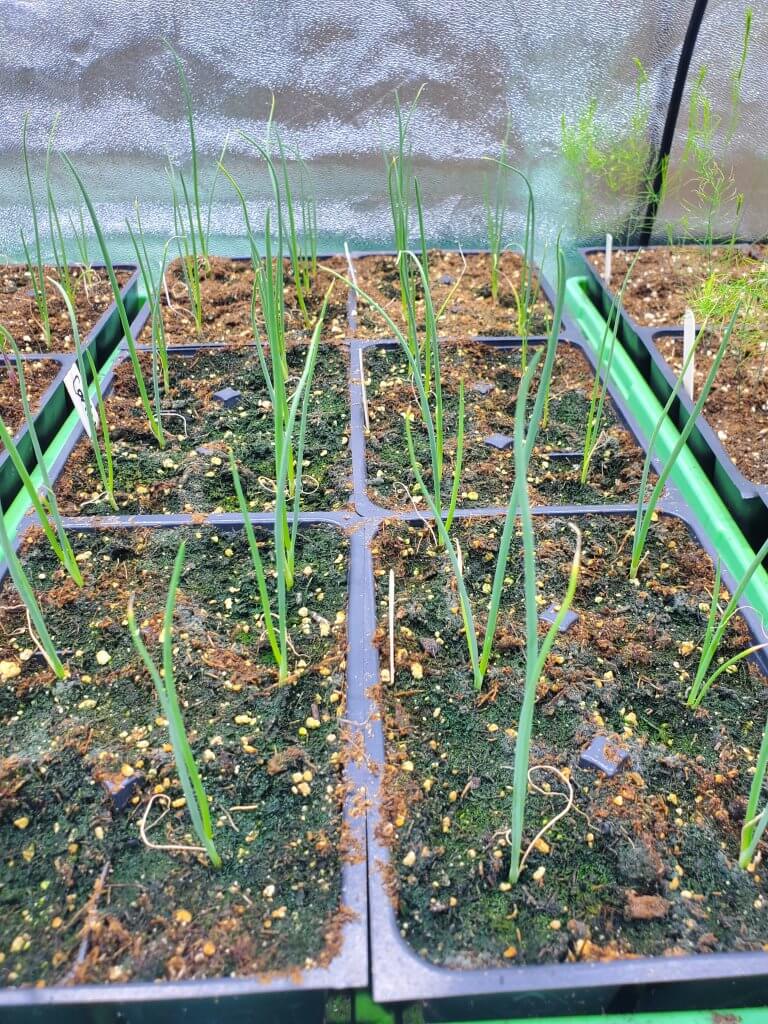
If this seems like a long time, we’d admit that it is. Growing onions from seed is the cheapest way to do it, but it comes at a price.
There is a way to short circuit this long growing requirement, though.
Fortunately, onions are very well behaved in indoor growing settings. They don’t sprawl out and try to take over other plants. It’s easy to get great density, too, for the same reason.
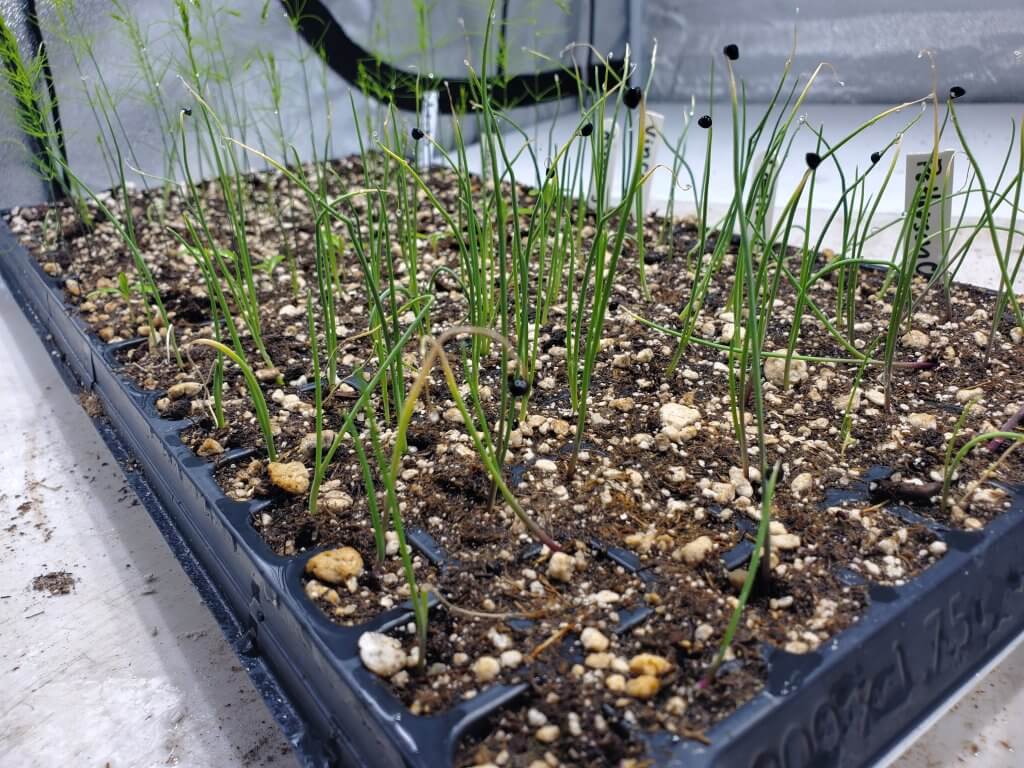
But, for this reason, growing onions from seed is not for everyone.
Use Onion Sets To Bypass Very Early Seeding Schedules
You will find that commercial greenhouses really don’t sell onion starts. They simply aren’t economical to sell, since you can usually find an onion at your grocery for less than the cost it would take to make an onion start and turn a profit. One start equals one onion.
The only way to do it at a commercial level is through very large scale.
Onion sets are available that can be direct sown in your soil, typically around last frost. Onion sets are basically onions that have been grown from seed, but are “harvested” well before they become a full onion. The green stems and roots are removed and the immature onion is allowed to cure, allowing for longer term storage.
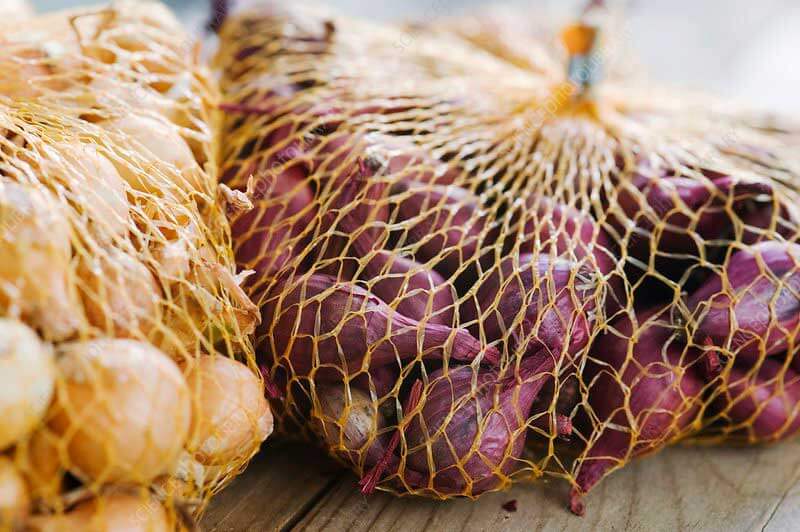
These are onion sets, which can be purchased from many nurseries and seed houses. They offer a gardener a way to “get ahead” where you basically are “finishing” the onion in your own garden.
Once planted again, the onion will spring to life. Sort of like the experiment many of us have done “planting” a celery stump in a glass of water to re-grow the celery plant. Since the onion is all ready a decent size, it’s far more practical to grow it in a single, summer season.
Onion sets are typically direct sown around last frost. They are cold tolerant, so you can sometimes get away with sowing a week or two before if conditions permit.
The cons to onion sets are that they are much more expensive to buy compared to onion seeds. While they are cheaper than grocery bought onions, the “is it worth it?” scale does tilt by quite a bit.
Also, we’ve grown them both ways, even side by side. There’s a reason we grow our own onion starts. Beyond being cheap, the “disruption” in the plant’s lifecycle does come at a cost to the final product. Home grown onion starts are simply bigger, healthier and more vigorous than onions grown from sets.
Onions Are Cold Tolerant, Even When They Are Young
If you’re growing your onions from seed, remember, they are a pretty darn cold tolerant plant.
We’ve done some “not recommended testing” of exposing fairly young onion starts to temperatures around and below freezing. Our plants did not die. They were maybe a little worse for wear, but lived on to become great onions.
Onions have great cold tolerance!
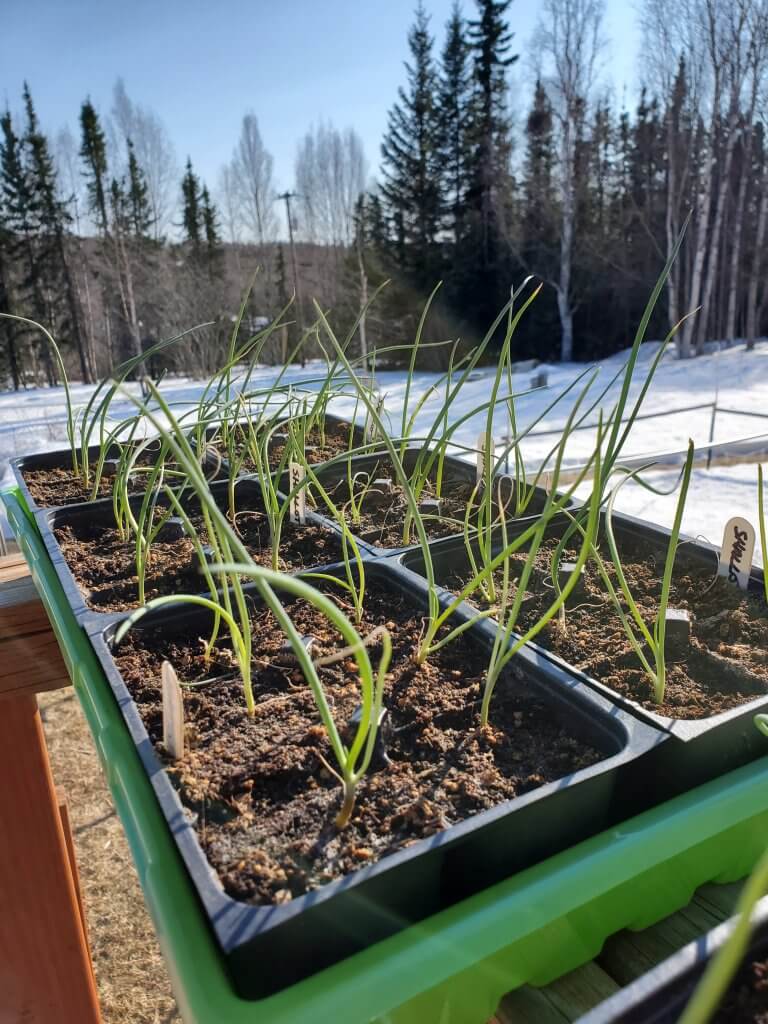
We often have our onions outside while there is still plenty of snow on the ground. Late April and much of May can often support cold tolerant plants growing outside. We are very vigilant about protecting our plants from adverse and cold conditions.
Having explored the cold tolerance of onions, we generally feel comfortable with anything above 36 degrees Fahrenheit as a bare minimum. We certainly prefer warmer, if it’s in the cards. Short exposures below this won’t seriously harm the plant, either. We’d just like to be consistently above freezing/frost points when we have them outside.
That basically describes the entire month of May in the interior of Alaska.
This is great for a home-food production situation in the subarctic. Usually, we’re cramped for indoor growing space at a certain point. Onions are one of those things you can put outside, quite early in the season.
In fact, it’s probably one of the only reasons we can grow our own onion starts.
We’re not talking about planting them just yet. We harden them off, typically in late April into May as we ease into summer. Once hardened off, they can then live outside. Most of the time, anyway.
We don’t advocate abusing your plants. When a night is predicted to get into freezing temperatures, we usually opt to bring our plants inside. In these cases, we usually don’t even offer them indoor grow lighting. They just go wherever we have space, with the intention of returning them outdoors as soon as conditions allow.
Be Prepared To Defend At All Costs
Onions have an arch nemesis. A source of pure evil that seeks only to prey on your hard work and take every single onion away from you.
There’s this dastardly creature called an onion fly. It somehow survives -50F winters and can devastate an onion crop before you even know you have a problem.
A quick primer on the onion fly life cycle:
- Fly lays its larvae around a growing onion’s stem.
- The larvae then burrow into the soil. The larvae eventually grow into full sized maggots.
- These maggots proceed to feast on your onions. Your onion plant will eventually die and your onion will be un-storable and unusable.
- The maggot becomes a fly through pupation once it “grows up.” It then flies off into the world to find and destroy more onions.
They are basically a butterfly from hell. At least if you’re an onion.
We have navigated an onion fly infestation and beat them, but it wasn’t easy. Many internet sources say you’re basically never going to grow onions again or you’ll have to move 5 miles away. We proved that’s not true!
The very, very best thing an onion gardener can do is prevent an infestation. Since these creatures are alive and well, despite our harsh winters, protection of your onion crop is essential.
We recommend covering all onions with a netting designed to keep flies and other bugs out.
We use PVC hoops on our raised beds, covered in a cloth-like bug netting, to help prevent the flies from gaining access to our onions to begin with. This effectively disrupts their hunt for good larvae-laying grounds and they’ll fly on to find other, easier targets.
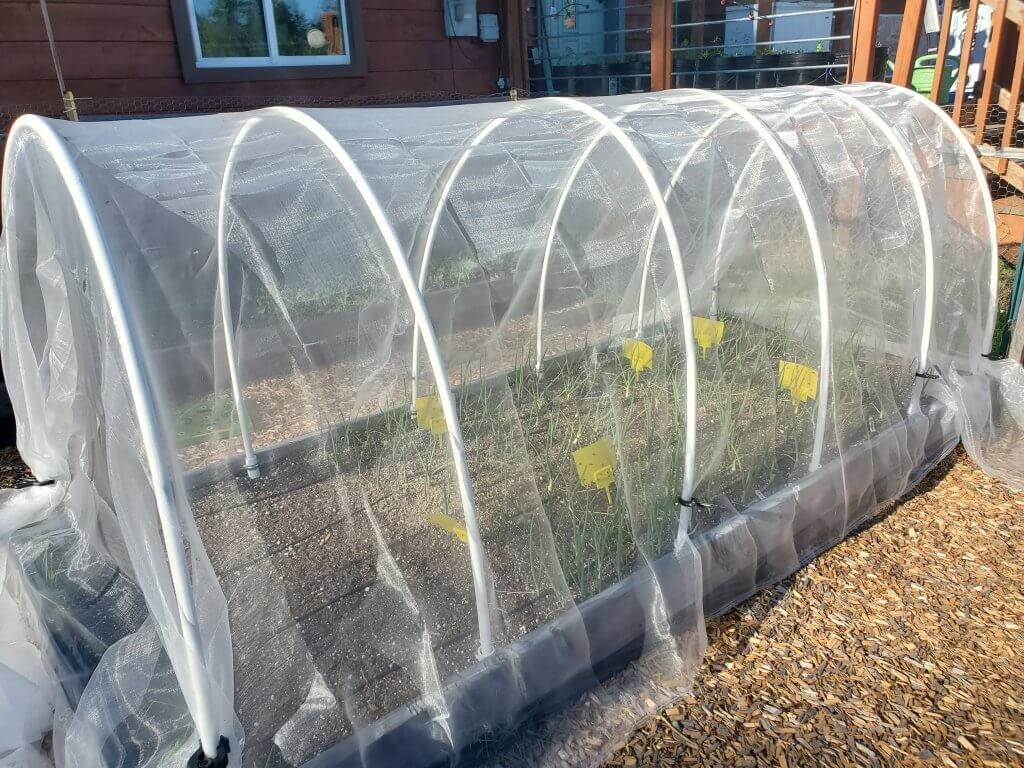
This is one of our protected onion beds. We plant everything that is sensitive to onion flies (onions, shallots, garlic) under this type of netting. This is very basic 1/2 inch PVC, secured with electrical conduit clamps. We hold the cloth to the hoops with cheap clamps.
You can be dumb like we were and eventually lose an entire crop to the onion fly. Or, you can be prepared, as we now always must be. If we want to grow onions, anyway.
Bonus tip. With the above kind of setup, you can also use frost cloth (also called remay cloth) to protect your onions (or other crops you might grow in raised beds) from unexpected frosts like so:
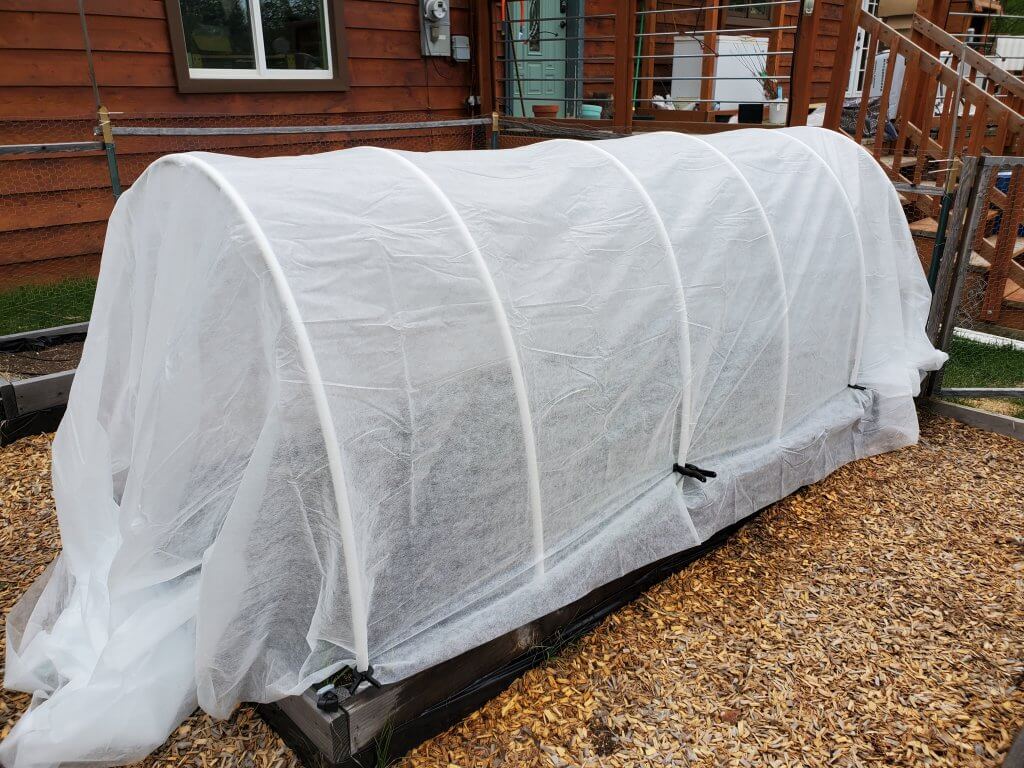
Keep Your Soil Loose & Airy!
Onions, and most root vegetables, will strongly prefer loose, airy type of soil that they can easily grow into.
It’s a good idea to try and avoid the dense, loamy silt types of soils we see in subarctic regions. You will get much better results from crafted soils, or heavily amended natural soils.
Amendments that break up the soil will be good for onions. Things like vermiculite, perlite, sand, greensand, organic material and so forth will be highly beneficial for your onions. You’re looking for a consistency that breaks apart very easily.
Our soil primer guide provides a ton more information on soil building concepts.
Plant Onions Densely, If You Can
Onions are one of those plants that can handle dense planting quite well. Just like how they don’t get all intrusive when raised indoors, they live their entire life unobtrusively to other plants around it.
A farmer might plant rows upon rows upon rows of onions. That’s not how we do it.
We use our raised beds to grow a thick batch of onions, all evenly spaced from one another. The spacing allows for the bulbs to grow to full size with little interference from its neighbors in any direction.
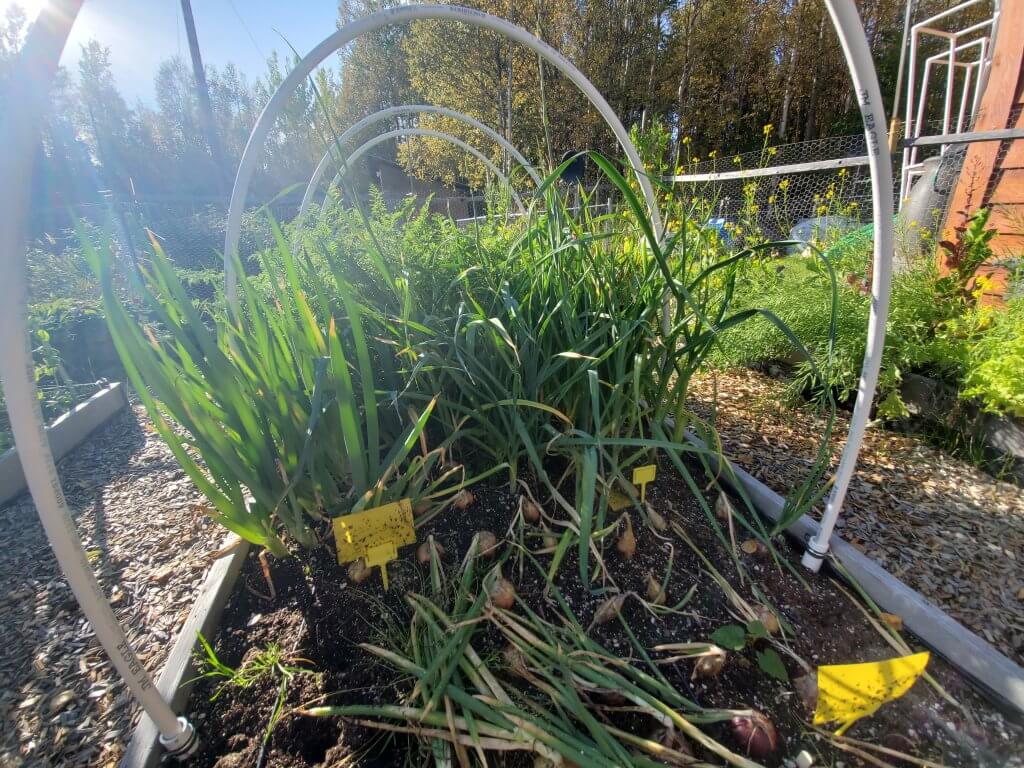
This is one of our onion beds shortly before harvest. We know the onions are “done” because the stems have laid down to the ground.
For the spacing, we borrow directly from the “square foot gardening” method. This technique calls for onions to be sowed four per square foot. This offers each onion about six inches of growing space in all directions.
In our experience, this works really well and allows a good bit of density in a small amount of space. We usually dedicate about 20-25 square feet to our onion crop, which nets us a respectable 80-100 onions at harvest.
Again, because we insist on protecting our onions, we’re a bit less concerned about growing them using this density.
Fertilize Well, But Infrequently!
If you’ve been around us for a bit, you know we’re big proponents of using fertilization to grow in the subarctic. We are not organic purists. We like the “punch” of good quality, non-organic fertilizers to help us win against an all ready challenging environment.
Onions are considered a “bulb” vegetable, which sits somewhere between a root vegetable and a “leafy” vegetable. Basically, this means it needs “all the things” in fairly equal proportion.
Typically, this means a good quality, well balanced all-purpose fertilizer is going to be perfect for our onion crop.
It can be a bit challenging to know when to first fertilize your onion seedlings, since there are no “true leaf” signs to look for. We generally first start fertilizing our seedlings when they reach 5 to 6 inches in height.
We like to prepare our beds early in the season with organic, granular based fertilizers. (Typically Down To Earth’s Bio-Live and sometimes other things.) This offers the onion plenty of nutrients for their initial growth.
In most other climates, it’s typically not recommended to continually fertilize onions. In subarctic climates, we do recommend applying a few, infrequent fertilizations throughout the growing season. This helps us finish the plant in our limited growing season, since we just don’t have the flexibility other areas have.
Typically, we use an all-purpose water soluble fertilizer, maybe once or twice later in the season. In our case, we usually aim for early July and early August for these applications.
Grow Onions With Other Root Vegetables
Almost everything we discuss in this post is applicable to other root vegetables as well. From fertilization to soil types, you’ll find a lot of similarity between them.
For this reason, it’s good to grow your onions with other root vegetables. This allows you to treat larger areas in a similar way.
A couple of really good choices to combine with onions are beets and carrots. Both of these are excellent companion vegetables.

Here you can see that we plant our onions with leeks, green onions and also carrots. These are excellent companion plants and also are “compatible” with each other for many reasons.
We do think it’s a good idea to avoid interplanting with things like garlic. Due to the problems with onion flies, which can also affect garlic, we prefer to keep these two separate to reduce risk. If given the choice, we’d rather lose one or the other, but not both.
Some people strongly prefer to plant onions “wherever” in their garden and that can directly help avoid some problems with onion flies. It’s not a “great” prevention technique in our opinion, though. Concentrating your onions allows you to protect them all with other techniques.
Cure Your Onions Before Storage
Typically, the end of the season means it’s time to harvest your onions. We often harvest our onions a week or two after our typical first frost date. Since we don’t have great opportunities for season extension at our subarctic latitudes, there’s little room for continuing growth.
You can tell that an onion is fully mature. Towards the end of maturity, the stems will bend over naturally. When you see that the color of the stem near this bend is no longer green, the onion is fully mature.
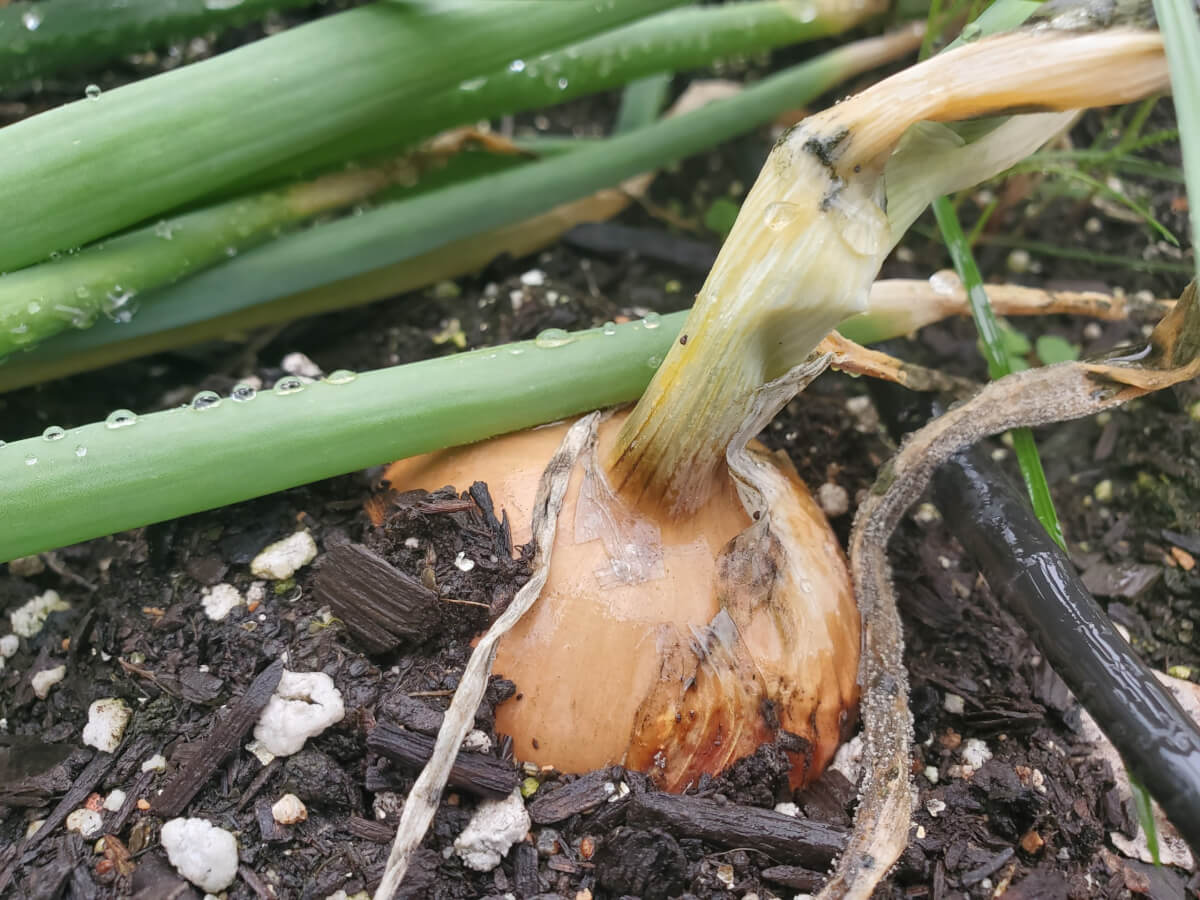
When your onion stem, at the natural bend, starts to look like this (and is no longer green), this is the best sign your onions are fully mature.
We harvest the majority of our onions with the purpose of storing them for winter. They are great in this capacity since they can be stored at room temperatures.
You can also freeze your onion crop, commonly diced, for use throughout the winter. This will typically get you 4-6 months of storage. If you want to extend that, we recommend using the blanch and freeze technique.
If you want to store your onions, you’ll need to cure them first. This will prepare them for storage. It’s very easy.
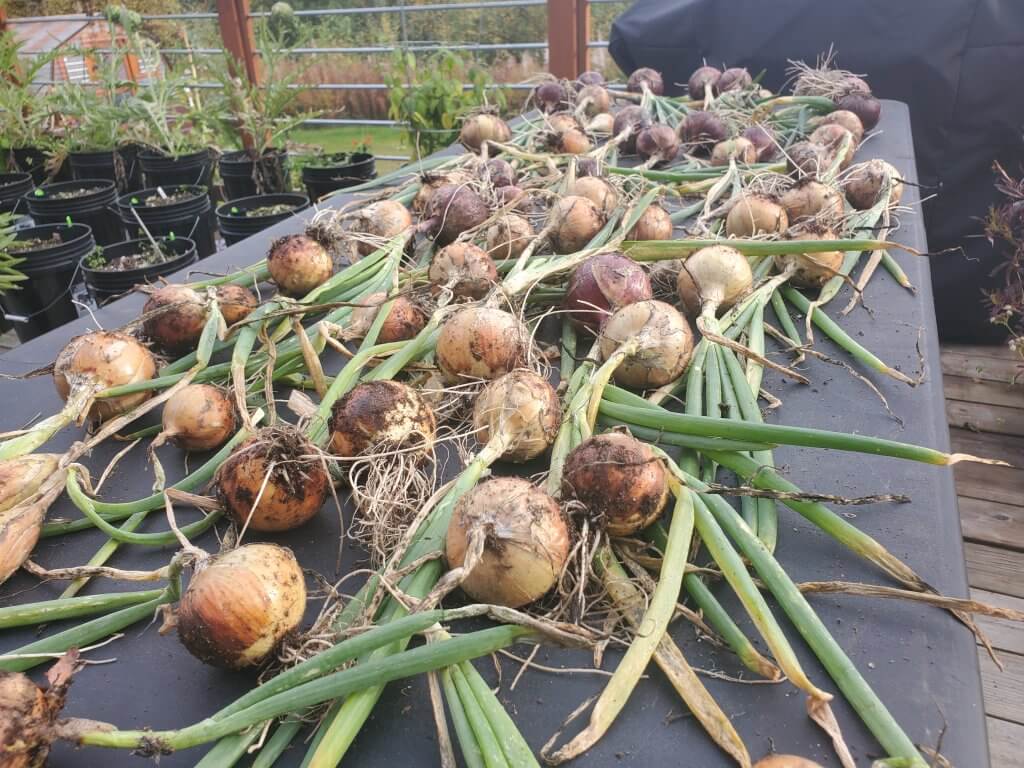
This is one of our onion harvests where we are preparing them for the curing process. This year, we were able to cure our onions outdoors on this table. Some years, we have to cover them or bring them inside.
We simply clean off any remaining soil from the roots, maybe trim the roots and clean up excess foliage up a bit. Be sure you don’t damage the skin of the onion. You can leave the green stem on it, or cut it off, it really doesn’t make much of a difference.
From here, lay out your onions in a single layer (no touching!) in a well ventilated area for about a week to ten days. We typically like to do ours outside, weather permitting, but you’re looking for temperatures between 50-80F.
If rains threaten this process, we’ll often put them in our barn for the curing. Some colder seasons, we’ve brought them inside. Daylight neither helps nor harms the process.
Be gentle with curing onions, they are quite fragile until they cure. If possible, don’t touch them more than you have to. Pick your curing location with the intention of keeping them there.
Also, don’t wash your onions until you go to use them. Store them in a well ventilated bag, like an old onion bag. Even old pantyhose legs do the trick, we save ours for exactly this purpose!
If some of your crop is damaged, it’s best to use these onions immediately or dice them for freezing.
You Too Can Grow Many Onions!
We hope that this article gives you a little insight into how we grow our own onions. It’s been a learning process even for us, they are definitely not the easiest of things to grow!
Once you can provide protection of your onion crops, they’re really a blessing to have in the garden. We love having our onions well into the following year, it’s been worthwhile for us.
If you’ve sworn them off forever, maybe you’ll reconsider it. We won’t blame you if you don’t, too…onions are “cheap enough” to buy that some just won’t find it worth the hassle.
Lastly, everything we’ve mentioned in this article is also applicable shallots. These are a culinary delight, but be aware these are a “favorite” of onion flies. If you grow shallots too, it can increase your risk of an onion fly infestation. Much of what we mention is also applicable to garlic and leeks, too, though we have separate guides for this as well.
Thanks for reading!
That’s All We Wrote!

Having a good time? We have an ever growing list of insightful and helpful subarctic & cold climate gardening articles, waiting out there for you!
- Cold Climate Gardening Basics 👉
- Growing Your Garden From Seed Indoors 👉
- Advanced Cold Climate Gardening Techniques 👉
- Plant Specific Cold Climate Growing Guides 👉
- Subarctic Perennial Food Forests & Foraging 👉
- Indoor Garden Lighting & Grow Rooms 👉
- Greenhouses & Temperature Control 👉
- Harvesting & Food Preservation 👉
- Solving Cold Climate Garden Problems 👉
- 1 Minute Reads On Tons Of Garden Topics 👉
FrostyGarden.com is 100% ad-free and we do not use affiliate links! This resource is voluntarily supported by our readers. (Like YOU!) If we provided you value, would you consider supporting us?

I quite enjoyed your article on the onions. Very comprehensive and pleasant to read. Thank you!
But where do you source your seed? I find that the packaging does not stipulate if it is long or short day variety.
e.g. https://mckenzieseeds.com/collections/onion/products/onion-seeds-candy
Thanks for your kind comment! I checked your link and it does say “good for Canadian gardeners” – so, it’s almost positively a long day variety. Also, a native Canadian shop like you linked “should” know the difference and won’t sell things that don’t work. (It’s more of a US problem, since we have both short and long day…and many of our readers may be using seed suppliers that sell both types.) If you don’t see confirming information from the seed seller, you have a couple additional options. You can research the specific varieties you’re interested in purchasing, chances are really good someone will have documented it. The other option would be to go with sellers that do make the effort to distinguish the varieties.
Hi! Thank you for this!!!!! Im a gardener in Northern Canada at North of 65 degrees. I am on my 5th year of trying to grow onions and I’m not ready to give up yet!!! I find I can get them to the size of a 2-3” wide onion but then they just stop growing in August. Do you find when you are starting them inside that they get the long day exposure? Or do you put lights on?
Greetings! You are welcome! When we start them indoors, we typically have our lights going for 14-16 hours per day, so definitely still “long day” exposure. Onions have a life span and at a certain point, they stop growing. (When the shoots fall over and the bend starts to look not green, they’re done growing.) The colder conditions we see do somewhat limit the size, but we still see “mostly” 3-4″ onions with a few smaller ones. I’d suggest trying the monthly fertilizer trick we mention. Also, maybe try different genetics too, the type of onion can often determine final size. Keep on trying! Home grown onions are delicious!
Hello! Would you mind sharing your favorite onion varieties? Thanks!
Sure, Kelsey! Our current favorite white onion is the Talon, our favorite yellow is Patterson and for reds, we go with Red Mountain. We do change things up on occasion, but these varieties have graced our northern gardens more than a few times. Really, any long day onion will do just fine. So, feel free to check out varieties like Cartier, Cortland, Red Bull, Redwing and even the famous Walla Walla. There’s lots of other long day varieties, too, that’s just a smattering. Good luck with those allium!